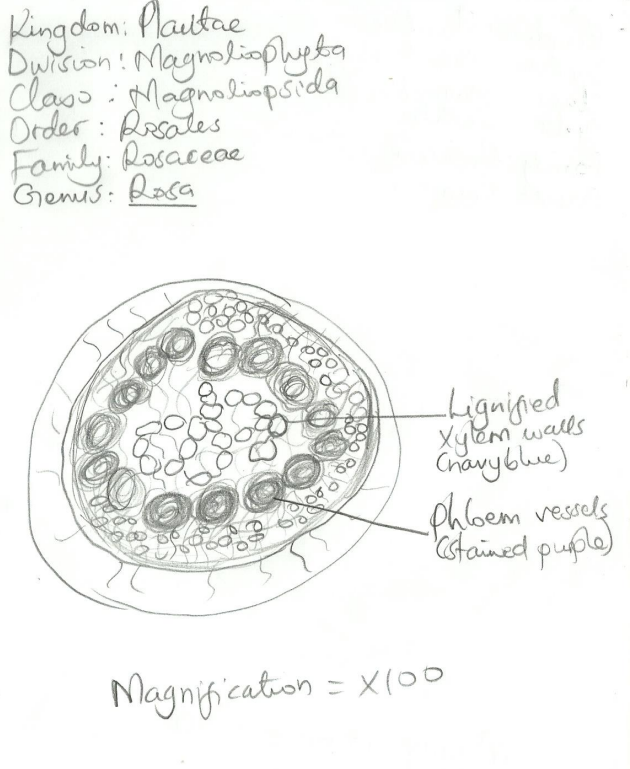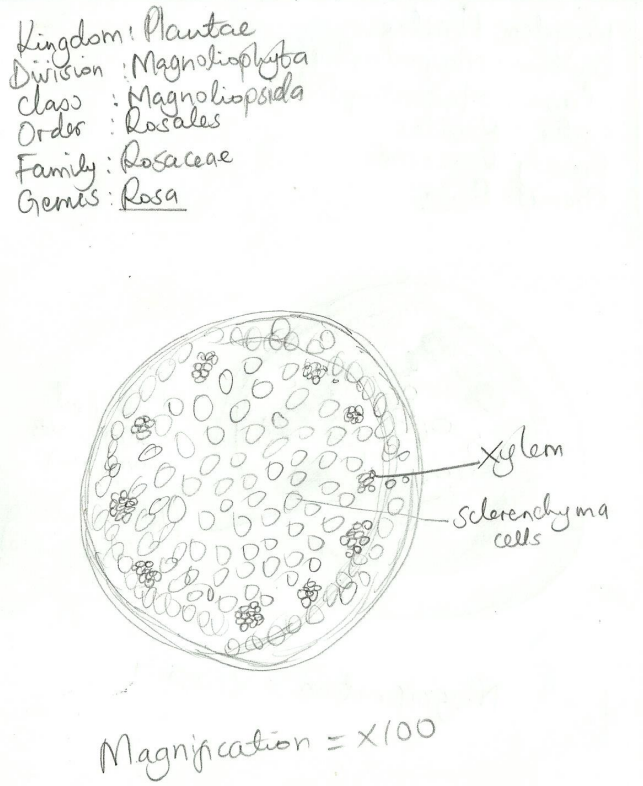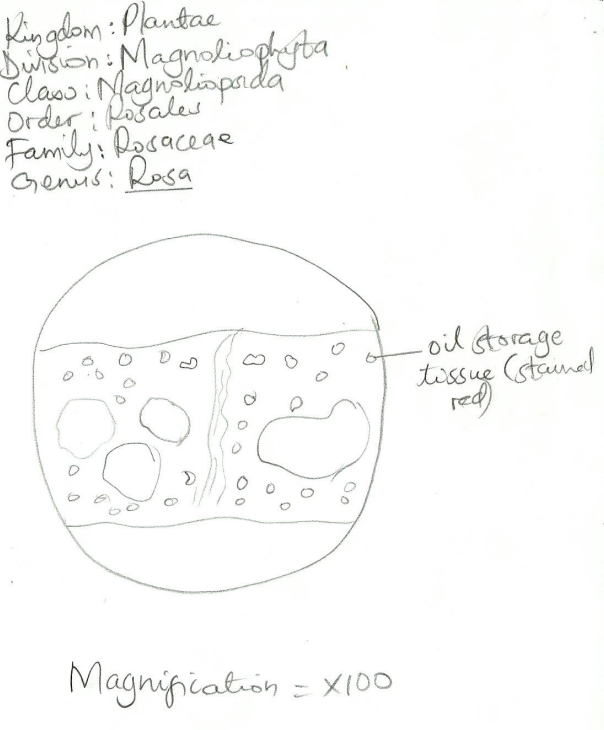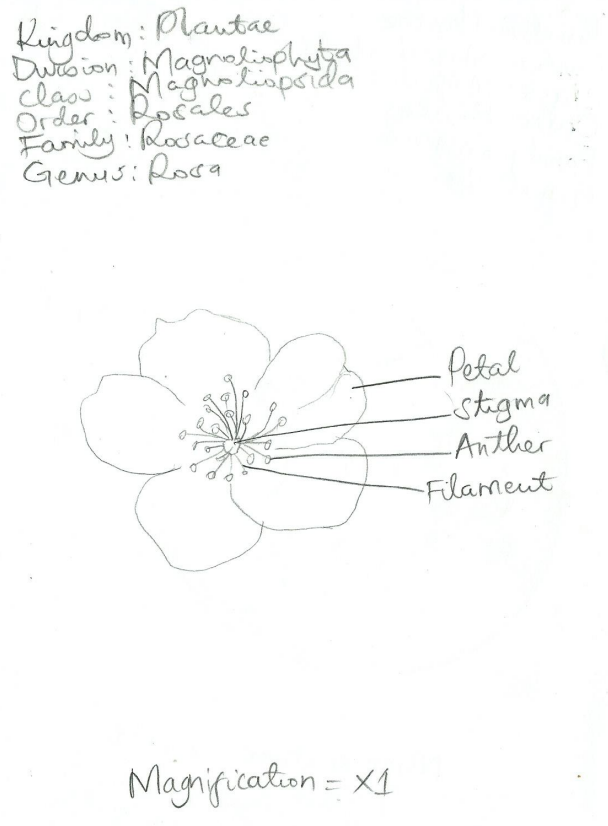Flowering plants are among the most diverse plants on earth with more than 12,000 genera consisting of approximately 250,000 species. This group of plants is often referred to as angiosperms based on the morphology of their seeds, which are usually encircled in carpels. Angiosperms are capable of thriving in various habitats ranging from aquatic to terrestrial environments. The ideal environment for a given species is determined by various adaptations that make the plant most suited for a particular environment. Terrestrial life presents substantial challenges for plants such as the possibility of desiccation, harmful radiations from the sun, and a lack of resilience from the water. Therefore, terrestrial plants need to adjust their cells and tissues to enable them to survive in their habitats. The process of adaptation often takes place over a prolonged period through the process of evolution (Harholt, Moestrup, & Ulvskov, 2015).
The genus Rosa comprises rose flowers, which belong to the family Rosaceae. The genus Rosa contains hundreds of species and thousands of cultivars whose physical features range from small to large as well as varying flower colors such as white, cream, yellow and red. The genus Rosa has economic and cultural importance in many societies due to the beauty and fragrance of its members (Abbasi, Khan, Khan, & Shah, 2013).
Study objectives
The main objective of this lab was to learn the assortment of specialized types of cells produced by the differentiation of plant cells of the genus Rosa and to observe how these cells can be brought together to create a functioning plant adapted to its specialized environment.
Hypothesis
- Null (HO) hypothesis: The abundance and distribution of stomata, storage, transport, and floral structures do not have a substantial influence on the adaptation of the genus Rosa to its environment.
- Alternative (HA) hypothesis: The abundance and distribution of stomata, storage, transport, and floral structures have a substantial influence on the adaptation of the genus Rosa to its environment.
Methods
Accurate drawings to depict the overall organization of the genus Rosa specimen were made before dissecting the plant. The cellular organization of various plant parts was then determined by dissecting the specific plant parts, staining them appropriately and observing them under ×10 objective lens of the microscope. The surface of epidermal peels was coated with nail polish, allowed to dry and mounted on a slide. The slide was then observed to determine the abundance and distribution stomata as well as other leaf surface features. A thin section of the specimen stem was stained with phloroglucinol-HCl stain and observed under the microscope. For the toluidine blue test (TBO), fresh sections of the stem were mounted in 0.05% TBO in water for a maximum of 1 minute and rinsed in water for an additional minute. The stained stems were then mounted in water.
For the iodine staining, fresh sections of the stem and root were dipped in iodine solution comprising 0.5% iodine in 5% aqueous KI for 2 minutes followed by rinsing with water and mounting in water. Sudan IV staining was done by fixing petal sections in 10% formalin for 10 minutes after which the formalin was replaced with 50% ethanol for
about 1 minute. The fixed sections were then stained with Sudan IV dye saturated in 70% ethanol for 30 minutes followed by rinsing with 50% ethanol and mounting in 75% glycerol.
Results and Discussion
Table 1: A summary of the tests carried out using various parts of the rose plant.
In the above table, the blacked out sections indicate the tests that were not carried out because the plant parts were not appropriate for the specific tests. The diagrams of the precise observations are provided in Figures 1 to 9 in the appendix.
The findings explained in Table 1 corroborated the alternative hypothesis that the abundance and distribution of stomata, storage structures, transport structures and floral structures had a substantial influence on the adaptation of the genus Rosa to its environment. Figure 6 showed pollen grains enclosed in a carpel, which was among the distinguishing features of angiosperms. The leaves of rose flowers had few stomata on the upper leaf surface to minimize the loss of water to the surroundings through the stomata (Figure 7), which enabled the plant to survive under limited water conditions. The presence of an impenetrable, waxy cuticle on the leaf surfaces also served to prevent water loss by evaporation. There were numerous xylem vessels in the stems and roots as indicated in Figure 1. The function of the xylem vessels was to facilitate the transport of water throughout the plant. It was also observed that the storage forms of starch were different in the roots and stem (Figures 2 and 3). The long-chain starch molecules were mainly stored in the stem whereas short-chain starch molecules were stored in the roots. This storage feature was an evolution feature that enabled the development of woody stems in rose plants to provide support for the plant. The presence of xylem tissue and sclerenchyma cells in the stem as shown in Figure 4 also enabled the development of woody structures for support (Harholt, Moestrup, & Ulvskov, 2015).
The distribution of fats and oils in the petals was vital because it enhanced insect pollination of rose flowers (Figure 5). The fats and oils contained essential oils that were responsible for the production of fragrances that attracted insects and other animals to the plant for pollination. The plant also had brightly colored petals whose purpose was to attract pollinators to the flower (Figures 8 and 9). From the study carried out by Tanaka, Brugliera and Chandler (2009), it was observed that wild-type rose flowers had fewer color variations than cultivated roses, which were products of genetic modification of the genes responsible for color production. This study showed the relevance of petal color to pollination.
It was concluded that the abundance and distribution of stomata, storage structures, transport structures, and floral structures have a substantial influence on the adaptation of the genus Rosa to its environment.
References
Abbasi, A. M., Khan, M. A., Khan, N., & Shah, M. H. (2013). Ethnobotanical survey of medicinally important wild edible fruits species used by tribal communities of lesser Himalayas-Pakistan. Journal of Ethnopharmacology, 148(2), 528-536.
Harholt, J., Moestrup, Ø, & Ulvskov, P. (2015). Why plants were terrestrial from the beginning. Trends in Plant Science, 21(2), 96-101.
Tanaka, Y., Brugliera, F., & Chandler, S. (2009). Recent progress of flower color modification by biotechnology. International Journal of Molecular Sciences, 10(12), 5350-5369.
Appendix
Figures








